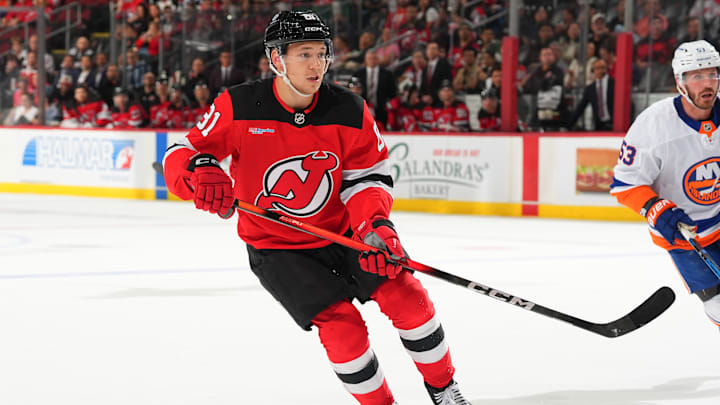With the Luke Hughes contract extension now secured, the New Jersey Devils find themselves nearly $4 million over the salary cap. That figure is manageable but still requires strategic maneuvering. Trading a cornerstone like Dougie Hamilton is not an option; he is too vital to the team’s defensive identity. On the other hand, the Devils have chosen not to buy out Ondrej Palát, an experienced veteran whose production has declined in recent seasons.
This creates an intriguing scenario for GM Tom Fitzgerald. How can the Devils optimize the roster, balance the cap, and improve performance on both ends of the ice? One possibility is exploring a trade involving Ondrej Palát, with the Colorado Avalanche emerging as a natural partner.
Why Colorado Makes Sense
Acquiring Palát is not just about adding another forward. The Avalanche gain a Stanley Cup-tested winger who strengthens the bottom six immediately. Palát brings two Stanley Cup rings, leadership, and versatility. He is effective on the penalty kill, can anchor a shutdown third line, and contributes offensively when needed. Even with salary retention by New Jersey, $4 million is manageable for a team making a playoff push that requires depth, experience, and reliability.
Why New Jersey Benefits
Offloading $4 million in salary solves the immediate cap challenge and opens flexibility for other moves. More importantly, the Devils could acquire Sean Behrens, a left-handed defenseman prospect with excellent skating and puck-moving skills. Behrens fits perfectly behind Luke Hughes and Nemec in the long-term pipeline, strengthening the defensive core.
Adding a future draft pick and a stopgap depth forward in Victor Olofsson, who can be sent to Utica if needed, makes this trade more than just a salary dump. It balances short-term needs with long-term strategic growth.
Assessing the Risks
Salary Retention: The Devils would need to retain some of Palát’s salary for two seasons, limiting flexibility in other deals.
Locker Room Impact: Palát is a respected leader; moving him could affect team chemistry.
Prospect Development: Behrens may not be NHL-ready immediately, but his development aligns with Daniil Orlov’s expected arrival from the KHL in a season or two.
Projected On-Ice Impact
Moving Palát frees ice time for younger wingers like Arseniy Gritsyuk and Lenni Hameenaho, increasing offensive opportunities. At the same time, adding Behrens to the defense bolsters the back end and reduces goals against. This combination improves balance, pace, and the team’s ability to sustain high-intensity play, ultimately creating more scoring chances and fewer defensive lapses.
Using the Devils’ full Sasquatch Score framework, which evaluates ice time redistribution, prospect development, veteran retention, and high-danger scoring opportunities, here is the 2025–26 projection:
Projected 2025–26 Overall Record
Wins: 42-45
Losses: 30-32
OTL: 10-11
Goals Scored
257–262
Goals Against
230–235
These projections indicate measurable improvement in both offense and defense, translating to four to seven additional wins and a more balanced, competitive team.
Final Thoughts
The strategic decisions made by GM Tom Fitzgerald, including the potential trade of Ondrej Palát and the promotion of emerging talent, set the stage for a promising 2025–26 season. Improvements in goals scored, goals against, and wins suggest the Devils could become a formidable team in the Eastern Conference.
By combining youth, speed, and strategic veteran leadership, New Jersey could emerge stronger, more dynamic, and better equipped to sustain success. The Sasquatch Score projections provide a concrete, measurable framework showing how these moves can enhance the Devils’ overall competitiveness and playoff potential.
